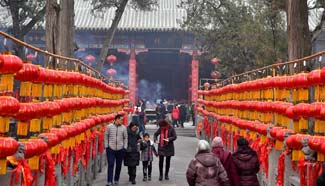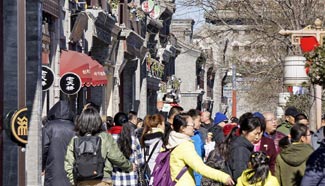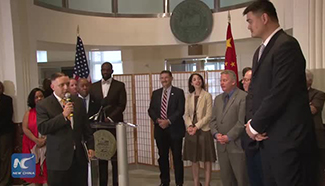SAN FRANCISCO, Feb. 5 (Xinhua) -- Chemistry researchers at Oregon State University (OSU) have developed a new technique for the separation of uranium, a key part of the nuclear fuel cycle, to be more safely and efficiently.
Results from the research, which were published in the European Journal of Inorganic Chemistry, involves a unique form of uranium discovered in 2005, uranyl peroxide capsules, and how those negatively charged clusters form in alkaline conditions.
The technique uses soap-like chemicals known as surfactants to extract uranium from an aqueous solution into a kerosene solution in the form of hollow clusters.
"This is a very different direction," said lead author Harrison Neal, a graduate student in OSU's College of Science. "A lot of the work done now is in acid, and we're at the other end of the pH scale in base. It's a very different approach, overall using less harmful, less toxic chemicals."
Throughout the nuclear fuel cycle, many separations are required, in mining, enrichment and fuel fabrication, and then after fuel use, for the recovery of usable spent isotopes and the encapsulation and storage of unusable radioactive components.
"When you use nuclear fuel, the radioactive decay products poison the fuel and make it less effective," said May Nyman, professor of chemistry at OSU and corresponding author on the research. "You have to take it, dissolve it, get the good stuff out and make new fuel."
Nyman noted that the work represents significant fundamental research in the field of cluster chemistry because it allows for the study of uranyl clusters in the organic phase and can pave the way to improved understanding of ion association.
"With extracting these clusters into the organic phase, the clusters themselves are hollow, so when we get them into the organic solution, they're still containing other atoms, molecules, other ions," Neal added. "We can study how these ions interact with these cages that they' re in. The fundamental research is understanding how the ions get inside and what they do once they' re inside because they' re stuck there."
When the clusters form, each contains 20 to 60 uranium atoms, "so we can extract them in whole bunches instead of one at a time," Nyman was quoted as saying in a news release from OSU. "It's an atom-efficient approach."
While existing separation techniques require two extraction molecules for every uranium ion, the OSU technique requires less than one extraction molecule per ion.














